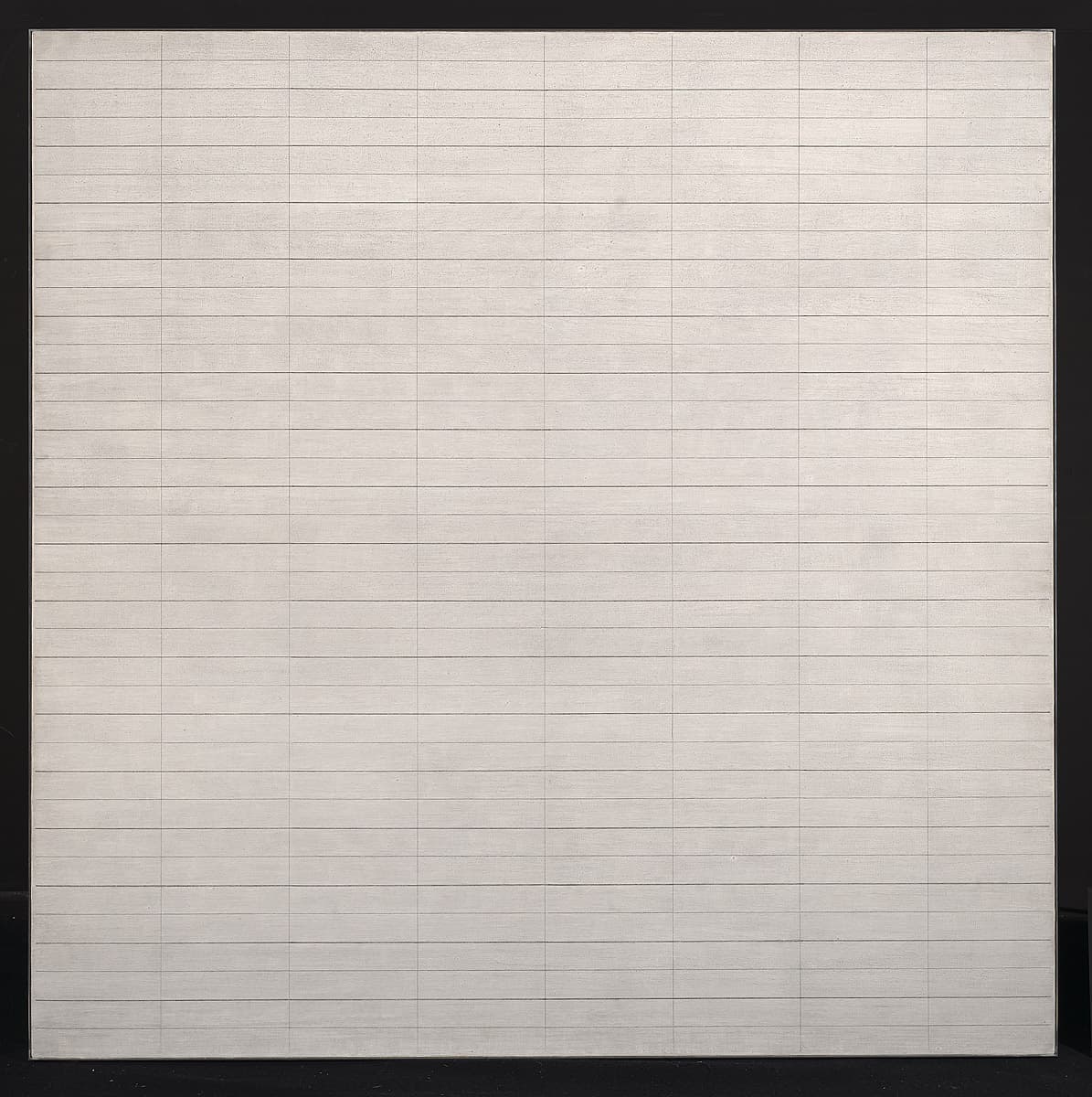

Agnes Martin
Learn moreUntitled # 4 1977
© Agnes Martin. ARS/Copyright Agency Purchased 1977
More detail | PermalinkIn the late 1950s, after painting portraits, still lifes and landscapes and teaching in Oregon and New Mexico, Agnes Martin began to produce paintings in highly simplified geometric forms. Her work became progressively more symmetrical and culminated in an ‘intense fixation on grids’, which became Martin’s signature.[1]
Untitled #4 1977 is an almost two-metre square canvas covered in gesso and an uneven ink wash. Over this surface Martin has drawn a series of vertical and horizontal pencil lines parallel with the edges of the painting, which form a geometric grid pattern. However, the work has few of the logical, machine-like elements of a regular matrix. On close inspection the hand-drawn pencil marks are uneven and their thickness varies considerably. We witness the record left by the pencil as it was dragged across the surface, including the jumps that occurred as the instrument encountered the small irregularities of the fibre and gesso. As the artist commented:
I’ve been doing these grids for years, but I never thought ‘Structure’. Structure is not the process of composition. Why, even musical compositions, which are very formally structured, are not about structure.[2]
The artist wants us to see the specific character of the painting’s composition, which is not an abstract system but rather a series of individual, drawn, lines. While the horizontal and vertical orientation of the lines in Martin’s work echo the edges of the canvas boundary and draw attention to the painting’s quadrangular format, she deliberately works against the physical properties of the canvas shape:
My formats are square, but the grids never are absolutely square; they are rectangles, a little bit off the square, making a sort of contradiction, a dissonance … When I cover the square surface with rectangles, it lightens the weight of the square, destroys its power.[3]
The strong impact of the overall square format is therefore diminished by Martin’s rectangular composition. Adding to this sense of ‘lightness’ is the fact that the pencil lines do not go all the way to the edge of the canvas. This prevents the composition from being locked down to the edges of the picture; the entire pattern of lines appears to float slightly off the canvas surface.
No portion of the canvas has been privileged over another. In his drip paintings of the early 1950s Jackson Pollock laid down paint skeins in every area of the canvas producing an ‘all-over’ composition. Similarly, Martin’s lines cover almost the entire canvas. As we stand before it, our focus wanders about, seeking in vain something to latch on to. Discussing one of her ‘grid’ works, Martin noted: ‘it’s not empty, but … nobody thinks of space or shapes or anything like that.’[4] If we persevere, groupings of rectangles do emerge momentarily as forms, but they soon dissolve. Longer contemplation induces the eye to relax focus and we ultimately abandon the attempt to see any concrete form. Just as Martin forces us to discard the usual connotations of the concept ‘grid’, we are also compelled to surrender our normal expectations of viewing a picture, of finding a figure or a form that would bring our immediate experience of the work to a conclusion.
Anthony White
[1] John Gruen, ‘Agnes Martin: “Everything, everything is about feeling … feeling and recognition”’, ArtNews, vol 75, no 7, September 1976, p 92, see http://www.artnews.com/2015/07/31/what-we-make-is-what-we-feel-agnes-martin-on-her-meditative-practice-in-1976/, accessed 2 March 2018.
[2] As above, p 94.
[3] Dieter Schwarz (ed), Writings, by Agnes Martin. Cantz, Ostfildern, 1991, p 29.
[4] Kate Horsfield, ‘On art and artists: Agnes Martin’, Profile 1, March 1981, p 7.
[Office1]I’ve added in an intro here as this is the earliest of Agnes Martin’s three works

